Customer relationship management (CRM) is both software and a growth playbook. To understand 2025 CRM trends, you must consider evolving technology and how real teams are changing the way they work because of it.
We analyzed insights across forums, podcasts, YouTube interviews and industry blogs to surface topics getting the most attention and adoption in the field.
In this post, you’ll learn nine current trends in CRM that experts are discussing and how to use them to encourage more sales from happy customers.
CRM technology trend: Most CRM software now includes artificial intelligence (AI) to automate documentation, scheduling, follow-ups and deal recommendations.
CRM activity shift: Reps spend less time on admin and more time having high-value conversations that move deals forward.
AI is transforming CRM systems from passive databases into active teammates, freeing humans to focus on what they’re uniquely able to do (e.g., building long-term relationships).
At its core, this trend is about embedding AI into daily workflows. Whether chatbots or voice assistants, these tools help small and medium-sized businesses (SMBs) scale their impact without increasing headcount.
For example, AI can draft emails, generate meeting summaries and set follow-ups. For salespeople, it can even recommend the next best move in a deal, like Pipedrive’s AI Notifications:

Rather than handling low-priority tasks, reps can focus on relationship-building activities like sales lunches and strategic conversations. Meanwhile, managers get instant insights from automated reporting and have more time to organize events and coach their teams.
While this isn’t a new trend in CRM, the conversation is shifting. As Jodi Searl, Chief Experience Officer of Medallia, told CRM Magazine in their 2025 predictions special edition, the question is no longer “Will AI steal people’s jobs?” but rather “How can it help us do our roles better?”:
The best AI quietly embeds into your team’s daily rhythm and helps everyone get more value from the day. It’s no wonder Gartner’s research suggests that 92% of executives plan to boost spending on technology in the next three years.
For example, Pipedrive’s AI agents (in beta) turn your CRM into a team of around-the-clock digital experts:
Other helpful AI-powered CRM features for SMBs include:
AI Email Writer drafts personalized outreach with a click and summarizes threads in seconds
Marketplace AI search engine recommends best-fit integrations based on your company size, industry, apps you already use and companies like you
AI Notifications nudges reps with real-time suggestions based on past wins
AI report generator allows you to ask questions in your own words to create insightful sales reports
Together, these AI-driven automations save time and make every rep more effective. For growing teams, this technology is how you stay competitive without burning out.
CRM technology trend: CRM solutions integrate seamlessly with customer service, marketing, product and billing platforms to create a shared view of each customer.
CRM activity shift: All teams work from the same record for faster handoffs, sharper personalization and more cohesive experiences.
One of the most significant shifts this year is the rise of unified customer records. Instead of scattering data across tools, businesses pull everything from sales, marketing and support into one place.
As your company grows, it’s easy for teams to drift apart. Marketing efforts run without sales team insights, and customer support resolves tickets without product team context.
Instead, use your CRM’s contact detail view to store information about email outreach, purchases and helpdesk tickets:
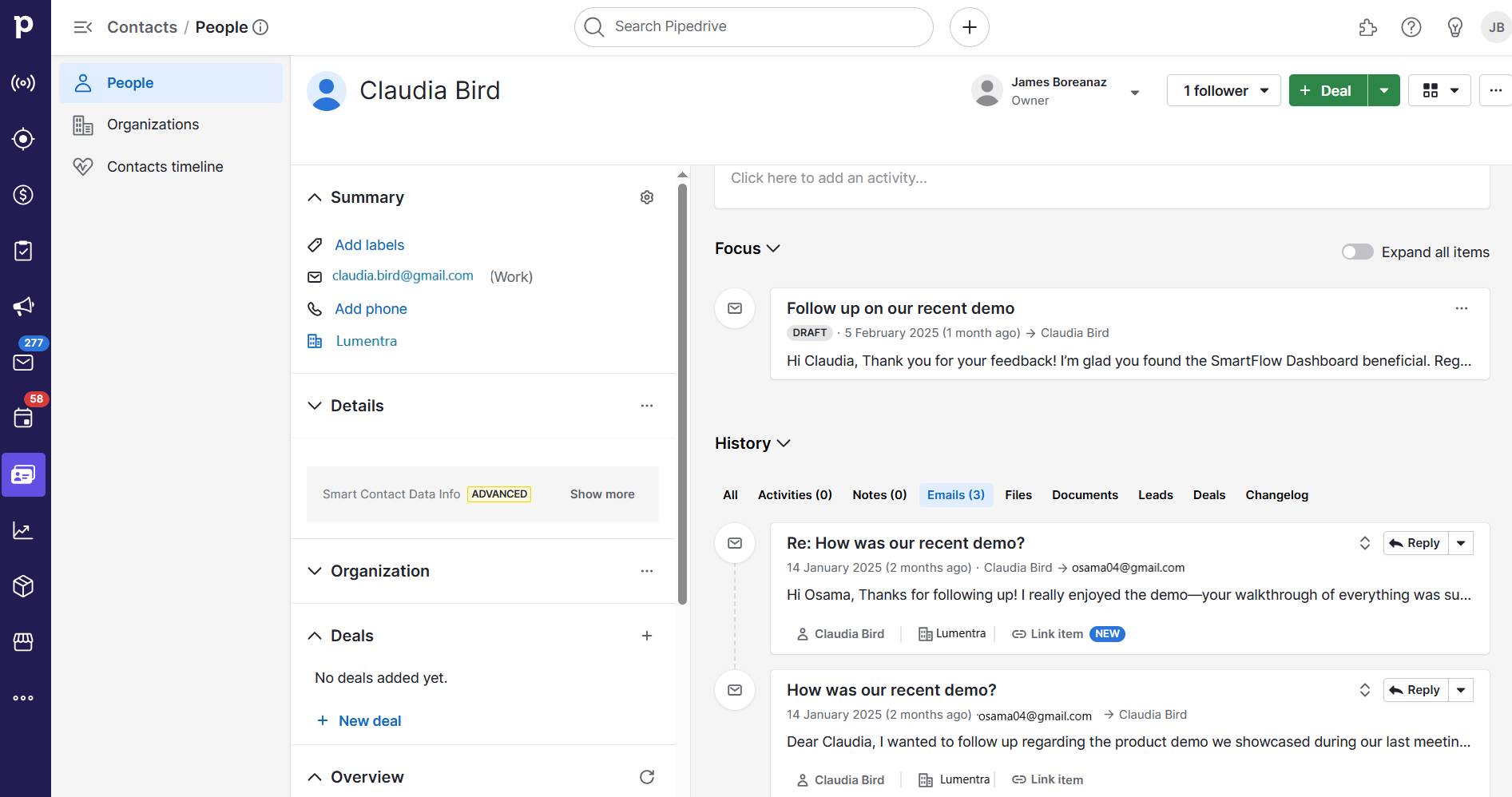
For SMBs, unifying this customer information eliminates guesswork. A rep picking up the phone can see:
Which case study a lead downloaded
Whether a user submitted a support ticket last week
What someone’s customer lifetime value (CLV) is
CRM platforms used to be solely tools for sales processes. In 2025, they’ve become cloud-based operating systems for every customer-facing team.
Companies still rely on enterprise resource planning (ERP) and email systems. However, founder Clint Oram believes the future of CRM blends them into one cohesive system:
Until then, third-party integrations like Pipedrive’s Marketplace let you control marketing, support and analytics platforms from one dashboard:

Choose from hundreds of apps to deliver faster responses, more relevant conversations and a smoother overall user experience (UX).
When everything about your customer lives in one place, reps spend less time searching for insights and more time solving problems.
CRM technology trend: Real-time customer data from browsing, app usage and Internet of Things (IoT) devices powers hyper-personalized outreach.
CRM activity shift: Teams move from “blasting lists” to delivering the right message at the right time, based on real customer behavior.
Instead of pushing the same content to everyone, timely, behavior-based communication is becoming the norm.
Personalization is no longer about swapping someone’s first name in a bulk email. Today’s CRM solutions help you tailor messages based on users’ actions (e.g., visiting a pricing page, using a feature less often or abandoning a cart).
This effort pays off. According to Twilio research, 57% of consumers are willing to spend more on personalized experiences.
Even offline signals from IoT devices like smart sensors or wearable tech feed into some CRMs to pinpoint timely, relevant touchpoints. For example, a fitness company may notice a user hasn’t completed a workout in 7 days and automatically trigger a motivational email or special offer.
Platforms like Pipedrive make collecting this data easier than ever. Track customer interactions across emails, websites or apps and automatically send follow-ups based on that behavior.
Here’s where workflow automations live in the platform:
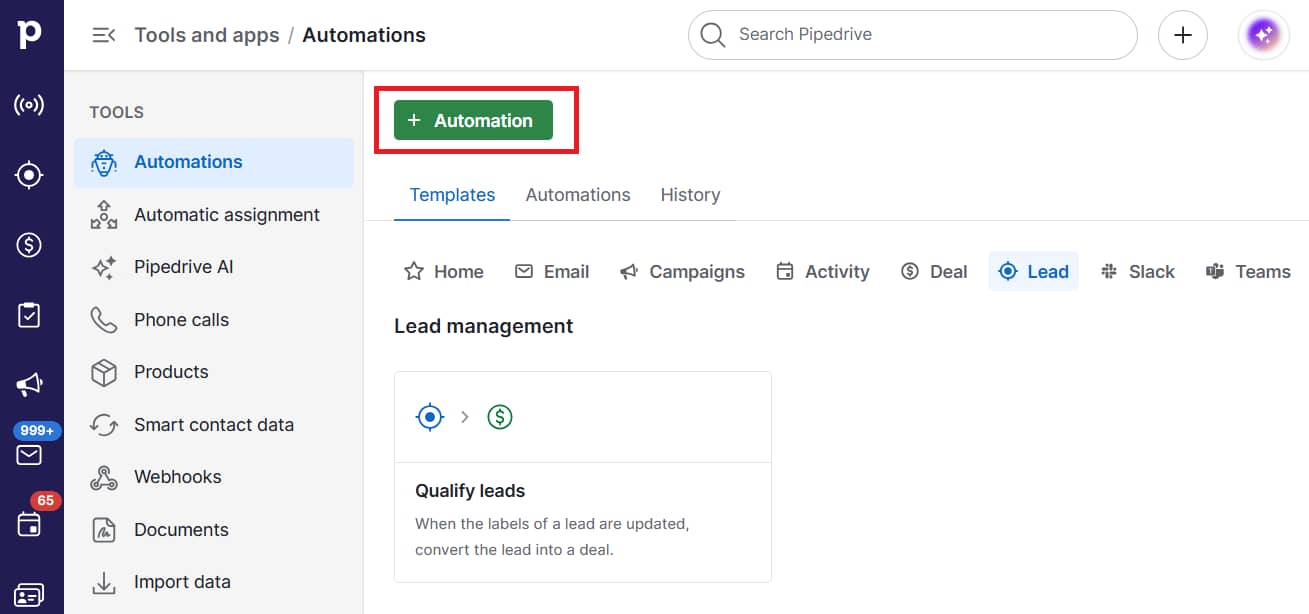
For example, a software-as-a-service (SaaS) company could use CRM automations to:
Email a lead when they revisit the pricing page
Alert sales reps when a top account stops logging in
Personalize onboarding based on which features someone talked about most
Use these shortcuts to eliminate manual tasks, nurture leads and support customers without a huge team.
CRM Magazine’s 2025 predictions special edition featured insights from several industry leaders, including Tara DeZao, Product Marketing Director of Adtech and Martech at Pega. She noted that:
Hyper-personalization isn’t just a nice-to-have anymore. It’s how small teams stand out and scale meaningful customer relations.
CRM technology trend: Modern CRM solutions now streamline chat, voice, social media and SMS to manage all conversations in one place.
CRM activity shift: Sales and support teams engage customers on their preferred channels (e.g., Slack, WhatsApp and Instagram), with every interaction logged automatically.
In 2025, your customers want fast, personal responses on their terms. By embracing omnichannel CRM, you can manage communication across multiple platforms in one view.
Whether a prospect replies to a campaign via SMS or reaches out on LinkedIn, your team sees the whole thread and context in the CRM. Salespeople can interact when a prospect is most ready to buy on a channel they prefer.
For example, Pipedrive’s Messaging Inbox connects your Facebook Messenger and CRM:
Instead of switching between tools, you orchestrate seamless communication. Nothing gets lost, and no channel becomes a dead end.
As Jonathan Bean, CMO at Sinch and CRM Magazine Editor, explains in his interview:
To stay connected across touchpoints, small business owners can choose a platform that:
Integrates WhatsApp, Messenger or live chat tools to create a social CRM
Offers automated workflows to trigger follow-ups based on conversations
Provides all data on the go with a mobile app
Maintains a central conversation timeline, regardless of channel
For SMBs, omnichannel CRM makes it easier to respond faster, personalize at scale and never miss a message.
CRM technology trend: Machine learning models built into CRM platforms now forecast deal outcomes, churn risk and next best actions.
CRM activity shift: Sales leaders coach reps using data-backed insights, while customer success teams proactively address risks before accounts slip away.
Predictive analytics features help teams forecast outcomes, surface high-risk accounts and prioritize deals most likely to close.
Instead of relying on gut feeling or manual spreadsheets, SMBs get data-driven guidance in real time.
For example, Pipedrive’s Pulse uses AI to spot leads most ready to buy and opportunities to engage with them:
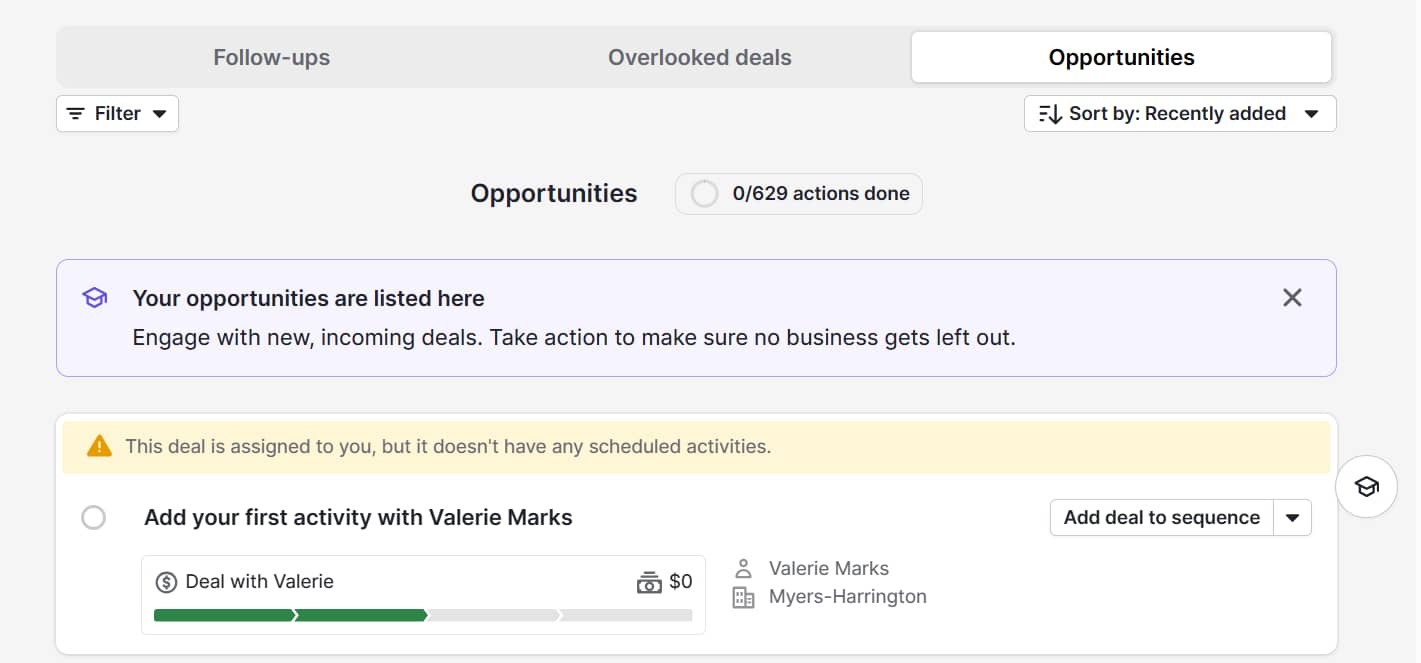
Use these accurate customer engagement levels to tailor your outreach accordingly. A highly engaged lead will likely appreciate a relevant case study more than an educational blog post.
Compare that to a team using a basic CRM. They manually sort through emails and notes, hoping to guess which leads are warm.
Some CRM platforms offer tools to spot reps who need support. For example, let’s say someone consistently loses deals after the proposal stage.
Managers can dig into that pattern and offer targeted coaching (e.g., improving negotiation skills or refining pricing strategy).
With predictive analytics, your team can eliminate guesswork and focus on the deals and opportunities that matter most.
These insights help small businesses:
Identify which contacts need attention before they stall
Spot early signs of churn so customer success steps in sooner
Coach reps based on past win/loss patterns
Forecast revenue accurately to plan resources more confidently
Teams get real-time nudges (like which deals are slipping), so they focus their time where it counts.
Speaking to CRM Magazine for their 2025 predictions issue, Partha DeSarkar, CEO of HGS and CRM Magazine Editor, explains:
Predictive analytics turns your CRM from a database into a revenue growth engine. Get more accurate sales forecasts, faster course corrections and stronger performance.
9 steps to creating the perfect sales strategy (with free template)
CRM technology trend: CRM solutions go beyond lead tracking to cover onboarding, support, retention and journey mapping.
CRM activity shift: Teams shift from transactional thinking to journey design, guiding customers from first touch to long-term loyalty.
CRMs are becoming end-to-end customer experience management (CXM) platforms. Now, SMBs use them to manage every stage of the buyer journey (not just the moment someone purchases) in one place.
Customers today expect consistent, helpful interactions throughout their lifecycle. According to Shep Hyken’s research, 83% of customers trust companies that provide excellent experiences more.
With a connected system, touchpoints feel seamless and personal.
For example, instead of closing a deal and moving on, CRM platforms can:
Automate onboarding and check-ins
Trigger upsell and renewal outreach at the right moments
Map and monitor the full customer lifecycle
Identify friction points and proactively improve them
This evolution turns static records into dynamic experience engines that help you create repeatable, personalized journeys at scale.
For example, platforms like Pipedrive offer custom pipeline stages to track retention and loyalty:
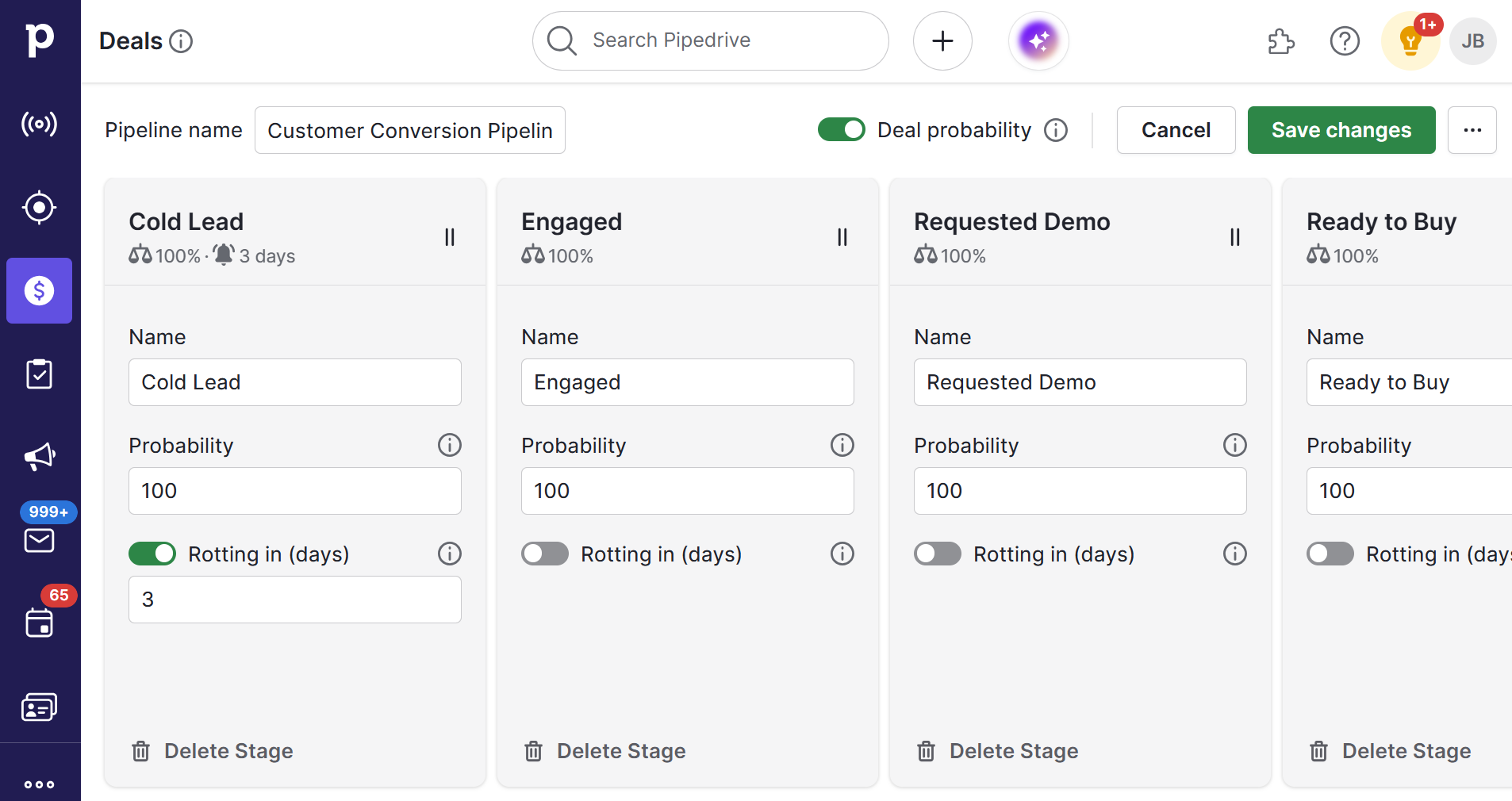
Add custom fields to track experience milestones and metrics, like customer satisfaction (CSAT) or Net Promoter Score (NPS).
As Adam Justis, Senior Director of Product Marketing at Adobe Experience Cloud, puts it:
In other words, CRM isn’t just about logging contacts or managing pipelines anymore. It’s about actively shaping the quality of the customer journey in real time.
According to Adam, the tools for shaping that experience are evolving fast.
Other experts see an even more data-rich future. In the same CRM Magazine insider roundup, Radi Hindawi, SVP at InMoment, predicts:
SMBs that embrace CXM through their CRM gain a decisive advantage – stronger retention, deeper insights and more loyal customers.
CRM technology trend: Modern CRM platforms offer granular consent management, compliance workflows and data residency options.
CRM activity shift: Teams design privacy-first customer journeys and reduce legal risk without slowing go-to-market (GTM) efforts.
To build customer trust in 2025, you must handle personal information carefully to stay compliant. With tightening data security regulations, businesses face stricter rules for contacting leads.
According to Cisco research, 95% of security professionals say customers won’t consider purchasing from companies if their data isn’t properly protected.
As of January 27th, the FCC’s updated Telephone Consumer Protection Act (TCPA) states that brands must obtain explicit written consent before calling or texting prospects.
This massive shift demands better systems. However, it can pay off for brands. As Ryan Johnson, a senior manager of Verisk Marketing Solutions and CRM Magazine Editor, explains in his interview:
In other words, privacy-first strategies in your workflows and CRM drive better results. People who know you play by the rules are more open to hearing from you. Plus, you’ll avoid fines and reputational damage.
For example, providers like Pipedrive offer multiple security certificates and comply with global standards like GDPR and ISO/IEC 27001. Learn more from the trust center:

Pipedrive also enhances login security with privacy features like single sign-on and two-factor email authentication.
When choosing software, look for CRM data protection features like:
Contact-level consent fields to track permissions clearly
Automated opt-in and opt-out tracking for email, SMS and calls
GDPR- and TCPA-ready templates to simplify outreach
Data residency controls so you choose where information is stored
These features protect your small business and help you reach leads who are ready to engage.
CRM technology trend: Drag-and-drop builders, form creators and automation tools let non-developers build workflows and dashboards without engineering help.
CRM activity shift: Sales and marketing teams launch new playbooks, test automations and iterate faster than ever.
Low-code and no-code CRM tools let non-technical users build and modify workflows, emails and dashboards without coding skills. They give frontline teams the power to create resources they need on demand.
This accessibility means fewer bottlenecks, faster experimentation and less time spent waiting in line for developer resources.
Users benefit, too, in ways that go far beyond just convenience. They gain genuine ownership over their daily workflows.
For example, Pipedrive’s Campaigns offers an intuitive drag-and-drop email editor that lets marketers spin up custom campaigns in minutes:
Let’s say you need to:
Add a new deal stage for upsells
Test a win-back automation for lapsed leads
Build a custom email marketing campaign
Create a form that routes hot leads straight to sales
In modern CRMs, that’s all possible without writing a single line of code. This flexibility is compelling for SMBs.
Instead of relying on bloated enterprise systems or chasing technical support for every tweak, teams stay nimble and ship faster updates.
This self-service setup helps you adapt CRM workflows as the business evolves, whether launching a new product line or refining a lead scoring model.
As Kate Leggett, VP and Principal Analyst at Forrester, puts it, “CRMs have become over-engineered, with too many features that are too expensive and too difficult to deploy”. She continues:
Low-code CRM customization is becoming the foundation of agile go-to-market operations. In 2025, business speed comes from eliminating development bottlenecks, not adding more engineering capacity.
CRM technology trend: Specialized CRM solutions are emerging with built-in templates, compliance support and automation for industries like real estate and legal.
CRM activity shift: Teams get up and running faster, with fewer workarounds and more time spent delivering customer satisfaction.
Vertical CRMs are platforms designed for one industry’s workflows, regulations and customer needs. Instead of customizing a generic platform from scratch, businesses start with the right tools from day one.
For example, Acculynx provides CRM software for roofing contractors:
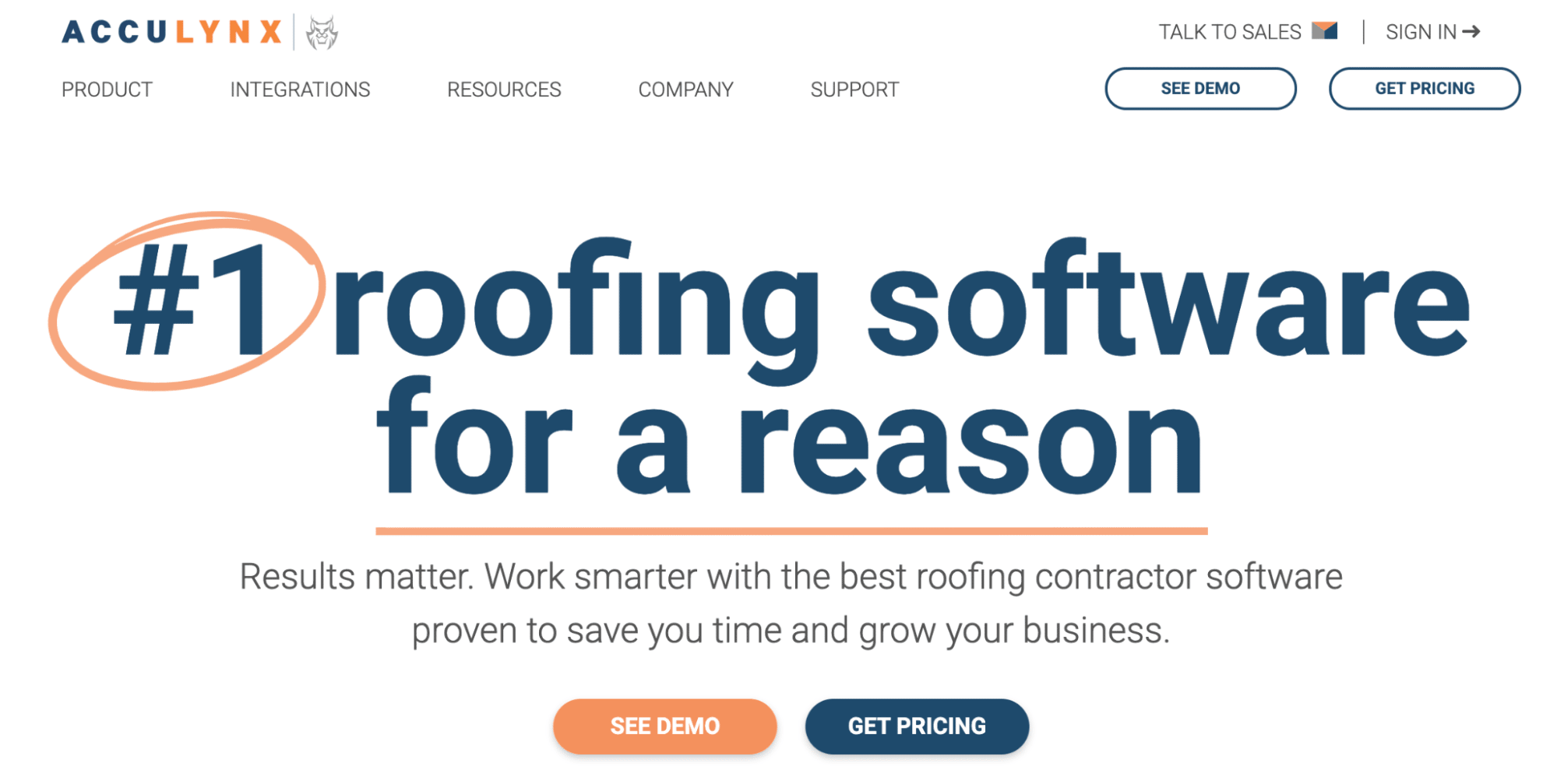
It includes features like supplier catalogs and the ability to place material orders directly, turning the CRM into an operational hub rather than just a contact database.
This built-in functionality makes adoption smoother and saves training, setup and manual process time.
Other examples include:
Healthcare: HIPAA-compliant templates and patient intake workflows
Legal: Pre-built matter pipelines and case tracking
Real estate: Property listing syncs and buyer profile management
E-commerce: Inventory management, cart abandonment tracking and purchase automation
As founder Clint Oram also puts it in his interview:
He also powerfully reminds readers that people don’t want to buy software, but outcomes. Software just happens to be the path to get there.
That said, an industry-specific CRM isn’t always the best fit. It may not be necessary if:
Your workflows are unique or evolving
You operate across multiple verticals
You want more control over integrations and automation
In these cases, a customizable CRM like Pipedrive can offer more long-term value, as you can tailor it to how your team works and pivots.
The best CRM solution fits your business today but can evolve with it tomorrow.
How to choose the right CRM industry trends to act on
You don’t need to adopt every market trend at once. The most innovative teams focus on what will drive the most immediate impact and align with how they work today.
For example, a five-person sales team at a startup might see the most significant lift from automating admin tasks and logging calls from a mobile CRM.
On the other hand, a 50-person business-to-business (B2B) team might benefit more from unifying data across tools and building personalized, behavior-based email journeys.
Here’s how to decide which of the latest trends in CRM to tackle first:
CRM trend | What it involves |
Start with your bottlenecks | Pinpoint where your team is losing the most time or missing the most opportunities. Example: AI can help if reps spend hours on manual data entry. CXM tools may be better if customers fall through the cracks post-sale. |
Match trends to your growth stage | Your company size dictates the type of features you need in CRM software. Example: Early-stage companies prioritize capturing leads and following up fast. Scaling businesses focus on consistency and visibility with unified data and predictive insights. |
Look for quick wins | Some trends take months to implement. Others show results within days. Example: Automated activity tracking or mobile sales tools may quickly prove return on investment (ROI) and build momentum. |
Prioritize how your team works | Choose trends that enhance your team’s natural workflow. Example: A marketing-heavy business might benefit from personalization features, while a field sales team cares more about real-time alerts. |
Think adoption-first | The best technology is useless if no one uses it. Example: Look for CRM tools that are intuitive, easy to set up and work alongside the software your team already uses. |
Start with the one or two trends that solve real problems today. Test, learn and build to stay agile and competitive in the coming years.
Final thoughts
These recent trends in CRM reflect fundamental changes in how teams build relationships and drive revenue.
While some involve shiny new features, focus on what will help your business grow. Most crucially, ensure you’re starting with the right CRM platform.
Pipedrive gives companies of all sizes the tools to act on these trends. From AI-powered insights to world-class infrastructure, try it free for 14 days to save time and sell faster.






